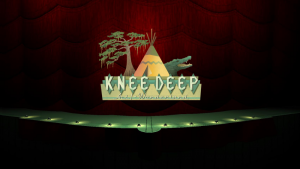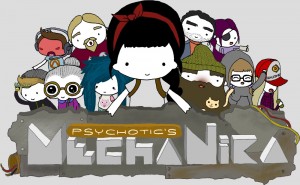Review for Nevermind

When the developers of Nevermind set out to create their psychological indie thriller, they decided to up the ante by designing the game around biofeedback functionality. In short, this means that the game can sense when you, the player, get nervous or scared, and it takes full advantage by then adapting to your emotional state. Nevermind is, quite literally, the kind of game where you’ll want to keep your cool. Of course, the biofeedback aspect only applies if you have the right hardware to enable it. Apart from this unique feature, its individual pieces still work fine in making you feel ill at ease on their own, but they never add up to a cohesive or, more importantly, complete package.
The idea behind Nevermind is a natural fit for this genre. You take on the role of a doctor, an expert in your field, having been freshly hired by the Neurostalgia Institute to treat their patients in a process known as neuroprobing. As you’ll soon find out, the Institute’s patients all suffer from some form of repressed mental trauma, locked away in their subconscious, which keeps them from leading a healthy, normal life. In order to help them resolve their issues, your job is to literally jack into their memories using the latest technology available to you. Once there, you’ll navigate their innermost recollections in search of buried memories that will let you cure their trauma. As you advance through each patient’s psyche and draw nearer to your goal, things around you will change in sometimes subtle, often hostile and unnerving ways as their mind literally tries to frighten you off rather than lower its defenses.
It quickly becomes clear that in neuroprobing someone’s painful recollections, there’s no telling what can happen. Nevermind shines in its constant disregard for logic or common sense, continually placing you in a nerve-wracking state of adrenaline-fueled hyper-awareness. As forest paths give way to twisted, corkscrew hallways; as deserted city streets become populated by faceless, aggressive mannequins whose eyeless heads turn to follow your every move, it’s not quite fear that settles in, but a palpable sense of dread of what might be around the next corner.
There is no real sense of peril, however. Though you’ll get hurt if you come into contact with certain objects in the environment, the game just sends you back to the last checkpoint to try again if that happens. At first these objects are intuitive, like sharp spikes spearing out of the floor in a gingerbread house during the tutorial. But another time I was surprised to be damaged by simply standing too close to a mannequin. In any case, avoiding the danger is simply a matter of moving past and out of its way, since you have no weapons and you won’t be pursued. So while Nevermind succeeds in creating a nightmarish atmosphere that will put you on edge, never finding yourself in actual jeopardy effectively eliminates any chance of becoming truly scared.
The most unsettling thing for me personally, once I’d figured out what traumatic event was at the center of each patient’s problem, was knowing what was coming, what it was building up to, yet being powerless to stop it; I couldn’t change the past, and facing these fears lies at the heart of neuroprobing rehabilitation. The game is designed around these slow-burn scenes, rather than relying on jump scares or threat of death to supply fear.
As you delve into the deepest recesses of each patient’s subconscious, you must find ten forgotten memories that take the form of photographs of key events in the person’s life. Once all ten have been collected, you’ll have to choose five of them to recreate the traumatic event that has been causing the patient so much anguish. Based on each photo’s caption, you’ll need to decide which ones are just window dressing relating to the subject’s life and which five describe the psychologically scarring experience, then arrange them in their correct chronological order. If you get the selections or sequence wrong, the photos re-scramble themselves for you to try again until you get it right. By forcing the patient to remember and face this forgotten memory, balance is restored and they can begin the long road to a full recovery.
My mind was already awash in anticipation of a deep and rewarding narrative, using the neuroprobing of individual patients as a common thread running through the story, when I got to the end of my second patient’s memory segment. Eager to move on to a third, I checked the computer terminal in my office, expecting a new case file to have been unlocked along with the two that were already completed. When I found nothing new waiting for me there, I wandered through the facility, seeking that moment when an open door would lead to a new area and the next phase in a larger story arc that seemed like it hadn’t even begun yet.
It wasn’t until ten or fifteen minutes of fruitless wandering had passed that I begun to suspect the truth: that I had already seen all available content in the two actual patient scenarios (plus the tutorial level in the form of a haunting retelling of the fairy tale Hansel and Gretel), and that there was actually no plot at all surrounding me, the neuroprobing doctor. Even as a collection of disparate patient stories, Nevermind falls woefully short on content when the tutorial ends up being one-third of the game’s approximate three-hour runtime. But play time isn’t really the issue; it just felt like the game was abandoned after the first few scenarios, to the point that it couldn’t even be bothered to communicate to me that is was already over.
In an apparent effort to include a bit of replayability, memories that have been completed can be replayed to unlock optional objectives, as indicated on the main computer terminal via cryptic clues of things to do or look for in the memory world. Unfortunately, upon re-entering you’ll only be able to access a small starting section of each world, as the rest is entirely blocked off. Apart from being unsatisfying to go back into one of the same three memories so soon after finishing them, the system is implemented in such a way as to make it clunky and bothersome. After fixating on some clues that seemed simple enough to solve, I reentered each memory sequence again, only to find that I couldn’t access the clues once jacked in to the system. What’s more, I’m not sure how I was supposed to activate the items I came back in to find. I ended up with a few of them checked off my list, though I didn’t do anything more than walk up to the object in question. In fact, I couldn’t have done more – the cursor remained non-interactive and no on-screen feedback led me to guess that I’d found one of the intended items.
Apart from exploring the three-dimensional dream worlds via a combination of keyboard for movement and mouse for camera control, Nevermind includes a few “puzzle-ish” sections, to the tune of about one big one per scenario, plus a few “pick up an object and find out where to use it” moments. There isn’t much in the way of challenge, though one of the final puzzles that has you rotating a collection of street signs pinned to a wooden door is made more difficult by being poorly clued. The other puzzles are either ridiculously simple or, like this one, require guesswork to proceed past. Ultimately, these obstacles take a backseat to the game’s creepy vibe, and I’m not entirely sure why they were included at all, other than to throw up a temporary roadblock to progress.
Nevermind probably won’t wow anyone with its first-person visuals, though I thought they were quite adequate, if not exactly pretty or technically impressive. You’ll spend more time noticing subtleties in the environment, such as puppet-like people whose only movement is a slow turning of the head as you walk by, always following you with their eyes. There’s never a moment of certainty; objects can shift on their own and entire locations can rearrange when your back is turned. Whether it’s buildings erected at impossible arching angles, a tunnel stretching through a mountain of crushed car wrecks, or an innocuous phrase about spilt milk being repeated over and over causing you to attach your own terrible interpretation to it, Nevermind has a knack for presenting the mundane in unnatural ways, making it feel alien and unhealthy.
These touches help maintain an eerie atmosphere, as does the soundtrack, which succeeds in a big way. Rather than an accompanying score, the game alternates between moody music (lots of screeching strings and whatever else might send a chill down your spine) and moments of complete silence punctuated only by environmental sounds like chirping birds and honking car horns. The odd ethereal, disembodied whispers manage to keep things firmly rooted in the surreal dream world. Voice acting is sparse, used mainly in a background story narration during the load screen when starting a new neuroprobing session.
I find it more worthwhile to judge a game on what it does, not by what is omitted. In that respect, Nevermind brings a promising (if not exactly fresh) concept to the table, and pulls it off with an admirably effective score that teases the nerves at just the right times. The developers have even tried to make the whole experience more immersive by tying it directly to the player’s stress level, assuming you have the right biofeedback hardware to enjoy this feature. (Unfortunately, I did not.) But in the end, Nevermind isn’t so much short-changed on content as it’s simply incomplete – there are even videos available on YouTube that include an additional patient file on the computer terminal, to be added “sometime in the future” – this file has been wholly removed from the final game.
Ultimately, while I like the separate pieces on offer, I have to scratch my head and wonder what the plan was to tie them together into a coherent whole. Rather than finding myself in perpetual cerebral terror, I am only left flabbergasted by the chopped-off way it all ends. It’s a bit like enjoying an entertaining novel, only to find that all pages after the halfway point are completely blank. I’d love to give Nevermind a glowing recommendation, but I get the distinct impression that the developers simply nixed too much content, and the adventure has been left unfinished. This game isn’t being marketed as episodic, but unless new content is added to make it feel like a complete game rather than a promising prelude, I can’t bring myself to wholeheartedly recommend it. Perhaps this is why we’re never supposed to wake up someone in the middle of a nightmare.



_capsule_fog__medium.png)























